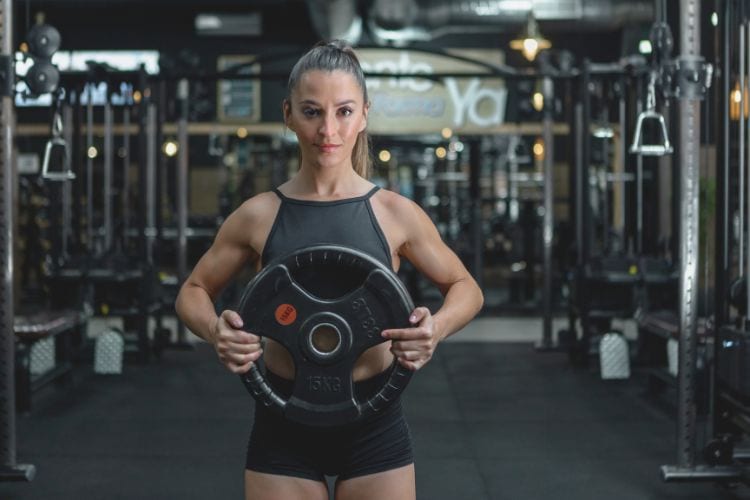Sign up for workout ideas, training advice, reviews of the latest gear and more.






For many women, the age of 40 is a milestone often marked by increased responsibilities, perhaps children growing up, or even personal and professional achievements. Amid these life events, health and fitness can sometimes take a backseat. However, as we age, the significance of maintaining muscle mass becomes even more crucial. Here’s a guide on building muscle after 40 for female, discussing the challenges, benefits, and effective strategies.
After 30, both men and women start losing 3% to 5% of muscle mass per decade, a condition known as sarcopenia. By focusing on muscle-building exercises after 40, women can combat this natural decline, ensuring greater strength and mobility as they age.
Muscle tissue burns more calories than fat, even at rest. As we age, our metabolism naturally slows down. Building muscle can counteract this slowdown, aiding in weight management and overall vitality.
Post-menopause, women are at a higher risk for osteoporosis due to a decrease in estrogen levels. Strength training, which builds muscle, can also increase bone density, thereby reducing the risk of fractures.
Exercise, especially strength training, releases endorphins — the body’s natural mood boosters. This can help women manage stress, anxiety, and even depressive symptoms more effectively.
The age of 40 often heralds the onset of perimenopause for many women, leading to fluctuations in hormones. This can impact muscle growth and recovery.
As we age, our body’s ability to recover from workouts diminishes, which can lead to prolonged soreness and fatigue.
By 40, some women might already have injuries or health conditions that could limit their exercise options.
Include compound exercises like squats, deadlifts, and bench presses. These target multiple muscle groups, promoting more significant muscle growth and hormonal release beneficial for muscle building.
Adequate protein is vital for muscle repair and growth. Aim for lean protein sources such as chicken, turkey, fish, tofu, and legumes. Including protein shakes or supplements might be beneficial, but always consult with a nutritionist or doctor first.
Allow your muscles to recover by giving them adequate rest between workouts. Incorporate stretching and perhaps yoga to aid in recovery and flexibility.
Consider consulting with a healthcare professional about hormone replacement therapy or natural ways to balance hormones. This can support muscle growth and overall well-being.
Working with a fitness professional can ensure you’re using the right techniques, focusing on the appropriate exercises, and progressing safely.
Water plays an essential role in muscle recovery and growth. Ensure you’re drinking enough water throughout the day, especially before and after workouts.
Muscle-building after 40 requires consistency. It might take longer to see results than it did in your 20s, but the benefits for your health and longevity are well worth the effort.
The female body undergoes various physiological and metabolic changes after 40. Understanding these changes can provide a clearer picture of why building muscle becomes both challenging and crucial during this phase.
As women age, their basal metabolic rate (BMR) — the rate at which the body burns calories while at rest — gradually slows down. This decreased metabolic efficiency means that without proactive efforts, weight gain becomes more likely. Moreover, as muscle burns more calories than fat, a decline in muscle mass further exacerbates this slowing metabolism. By building muscle, women can give their metabolism a necessary boost, ensuring they can manage their weight more efficiently.
Estrogen plays a pivotal role in women’s overall health. Apart from regulating the menstrual cycle, it impacts bone health, cholesterol levels, skin elasticity, and even mood. As women approach perimenopause and eventually menopause, estrogen levels fluctuate and then decline, impacting muscle recovery and growth. Strength training can be a beneficial counteraction to some of the negative effects of estrogen loss, particularly in terms of bone health and metabolism.
While this article primarily emphasizes strength training, it’s essential to understand the role of cardiovascular exercise. Cardio exercises like running, cycling, and swimming are excellent for heart health and endurance. However, overdoing cardio can also lead to muscle loss. Hence, striking a balance is crucial. Consider incorporating interval training or combining cardio with strength training for maximum benefits.
Muscle memory implies that if you continue with the same exercise routine, your muscles adapt, leading to a plateau. After 40, breaking through this plateau becomes even more challenging. It’s crucial to constantly challenge your body with new exercises, increasing resistance, or incorporating different training techniques like drop sets or circuit training.
Apart from protein, ensure you’re getting a balanced intake of carbohydrates, fats, vitamins, and minerals. Carbohydrates are your body’s primary energy source during workouts, while healthy fats are essential for hormone production and overall health.
Omega-3 fatty acids, found in fish and flaxseeds, have anti-inflammatory properties and can aid in muscle recovery. Vitamins and minerals, particularly vitamin D and calcium, play a role in bone health, which becomes critical after 40.
The concept of the mind-muscle connection revolves around focusing on the muscle being worked during an exercise. This focused attention can enhance muscle activation, leading to more effective workouts. Especially for women over 40, where every bit of advantage counts, fostering this connection can yield better results.
Consider incorporating practices like meditation, deep breathing exercises, or even tai chi. These not only aid in mental well-being but can also help in managing the stress which, if chronic, can hamper muscle-building efforts due to elevated cortisol levels.
Join a fitness class, group, or community. The motivation from being part of a group, coupled with the shared experiences, can be invigorating. Many women over 40 find renewed enthusiasm and consistency in their fitness journey when they’re part of a community.
Lastly, while enthusiasm is commendable, it’s crucial to listen to your body. After 40, the risk of injuries can increase, so always prioritize safety. If something feels off or painful (beyond typical workout soreness), consult a professional.
Building muscle after 40 for females is a journey of resilience, adaptation, and self-care. It’s about understanding the unique challenges that age presents and navigating them with grace, knowledge, and persistence. While the journey might be a tad more challenging than in earlier decades, the rewards — in terms of health, vitality, and self-confidence — are unparalleled. Remember, it’s never too late to start, and the best time to embark on your fitness journey is now.
Stay up to date on the latest women’s health, fitness and lifestyle trends and tips.